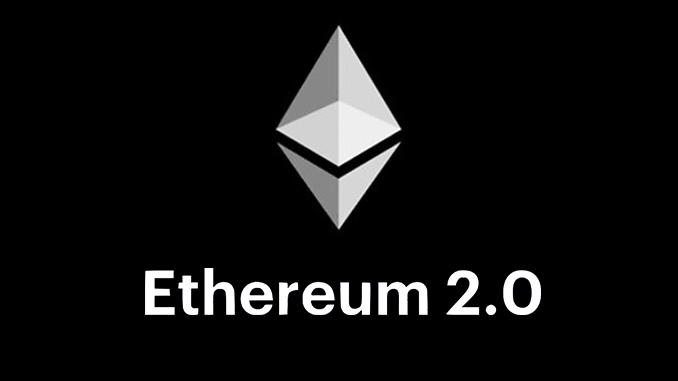
Ethereum (ETH) is facing a fundamental renewal of its technological base. With Ethereum 2.0 the protocol of the block chain is to be changed, thus making the ecosystem future-proof. But the development work is taking longer than expected.
The DeFi boom is attracting a lot of attention to Ethereum (ETH), since a large part of the DeFi projects are based on Ethereum’s technology. But the run shows also the weaknesses of the second most important crypto currency after market capitalization. The block chain of ETH often cannot cope with the increased number of transactions, fees increase and processing times are longer. Such a situation had been foreseen at Ethereum for years and therefore they started the project Serenity. Also known as Ethereum 2.0, this project aims to replace the Proof-of-Work (PoW) protocol with Proof-of-Stake (PoS). But what does this actually mean, why is the changeover so important and can a realistic timetable for Ethereum 2.0 now be shown?
Background on Ethereum 2.0 (Serenity)
When Ethereum went live in mid-2015, the team around inventor Vitalik Buterin had chosen the proven proof-of-work protocol known from Bitcoin (BTC) for the implementation. At PoW, the block chain is arranged block by block and the latest block contains confirmations for current transactions. For activating a new block, the responsible network participants receive Block Rewards as rewards and Gas as fees. For their work, computationally intensive cryptographic puzzles must be solved. With this system, ETH’s block chain can handle up to 30 transactions per second (TPS), which is far too low a figure considering the demand.
Proof-of-Stake as a new protocol strived for at Ethereum changes the mechanics of the block chain in a groundbreaking way. Instead of costly calculations, network participants will be able to check transactions themselves. This will save energy and allow for much more TPS as long as many nodes participate in PoS. Ethereum 2.0 wants to be able to process up to 100,000 transactions per second and wants to achieve this through sidechains (sharing).
But Ethereum has long been too important to risk experiments in the mainnet. In addition to the actual transfers, the ETH blockhain also has to manage smart contracts, organize DApps and document ERC-20 tokens. All this should work smoothly with Ethereum 2.0, if the switchover works.
Schedule for Ethereum 2.0
As far as Serenity is concerned, ETH only runs Testnets at the moment. The release of Ethereum 2.0 is planned to take place in several phases, whereby phase 0 is still considered possible by Buterin for 2020. This would create a parallel block grove (Beacon) at Ethereum, which is already based on PoS in the protocol. Phase 1 at Serenity will bring more sidechains with PoS, according to current information 64 such shards are planned for the time being and should be available in 2021. But this phase of Ethereum 2.0 does not yet support Smart Contracts. This will only change with phase 2 of Serenity. Optimists hope for a fully functional Ethereum 2.0 in 2021, realists expect it to be available in 2022.
Developers and external testers are rightly calling for a comprehensive audit. The Ethereum Foundation is actively looking for new employees to focus on security related testing of Ethereum 2.0. The current Testnet Spadina showed low participation and non-valid accounts. The current Testnet is called Zinken and is designed to solve these problems. But as I said: Phase 0 of Serenity is more a feasibility study of PoS at Ethereum, the limited functionality without Smart Contracts does not yet make Phase 0 a real alternative to PoW.
Conclusion: Patience needed for Ethereum 2.0
Ethereum wants to stay ahead in the competition of crypto currencies with its own ecosystems and therefore urgently needs a technological update. However, anyone who believes that phase 0 of Serenity has already achieved the worst is probably wrong. ETH is currently scoring with its Smart Contracts and ERC-20 tokens, which will remain on the Ethereum PoW block chain for the time being. Only with phase 1.5 or 2.0 will Ethereum 2.0 become fully compatible with the existing ecosystem and thus achieve the eagerly awaited performance improvement. Nevertheless, success stories about Ethereum 2.0 should have a positive effect on the price of ETH, as not all market participants pay attention to details. On the other hand, the hanging section of IOTA 2.0, for example, shows how demanding such development work is. To underestimate the risks on the way to Ethereum 2.0 would be negligent. It also remains to be seen how Ethereum Miner will position itself and whether ultimately ETH users will gain confidence and later shift their assets to Ethereum 2.0.
Best place to buy Bitcoin and Ethereum:

Leave a Reply